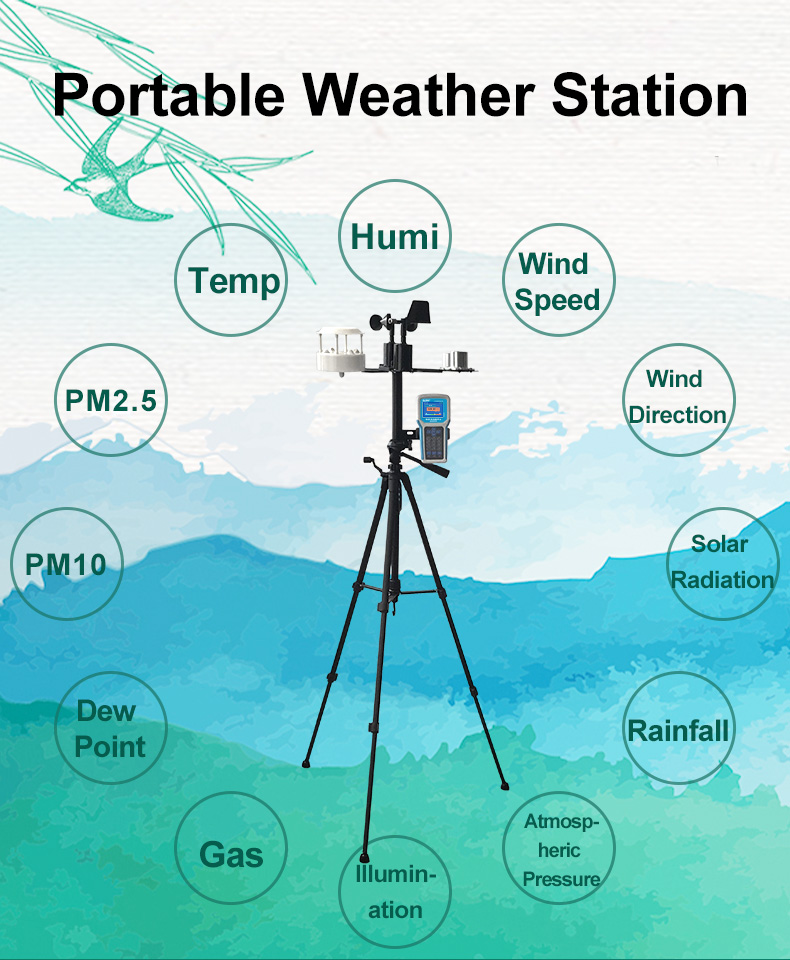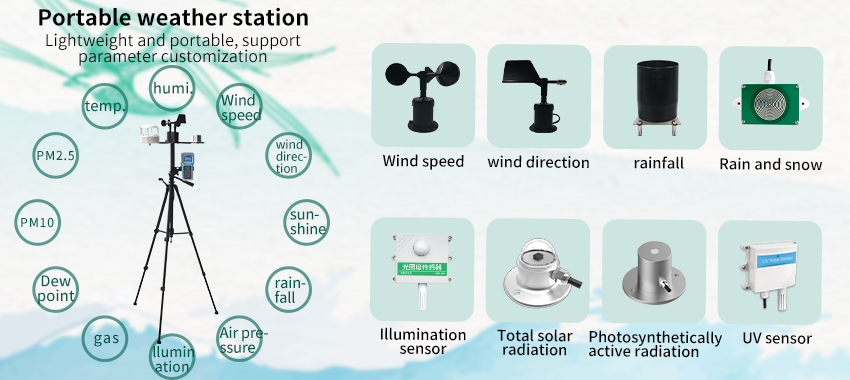weather station equipment

Weather station equipment plays a crucial role in environmental monitoring. It provides data on weather conditions, such as temperature, humidity, wind speed and direction, precipitation, and atmospheric pressure, which are essential for understanding and predicting weather patterns and climate change. Moreover, this same data is also useful for various fields requires information on the environment, such as agriculture, natural resource management, construction, aviation, and emergency management.
the role of weather station equipment
- Climate Change Research
Weather station equipment provides valuable data for research into climate change. This data allows scientists and researchers to monitor trends in weather patterns, assess the possible impact of global warming, and model future climate scenarios. By providing accurate and consistent data over an extended period, weather station equipment enables researchers to identify long-term trends and determine if fluctuations are within acceptable ranges or whether they signify significant changes in climate.
- Agriculture
Farmers rely on weather station equipment to make informed decisions about planting, fertilization, pest control, irrigation, and other farming operations. By providing precise and up-to-date information on weather conditions, farmers can anticipate weather patterns and adapt their practices accordingly. For example, based on radar imagery provided by weather satellites, farmers can make decisions about crop rotation, adjust planting times, and prepare for inclement weather to minimize damages.

- Natural Resource Management
Environmental managers employ weather station equipment to track weather variables and understand how ecosystem processes may be impacted by changing weather patterns. For instance, in forests, wildlife reserves, and wilderness areas, weather stations measure temperature, rain, and wind data that inform forest fire risk assessments and alert management when climatic conditions increase the likelihood of forest fires. In addition, weather station equipment can help predict runoff and erosion potential, watershed development, and regional hydrologic events.
- Construction
Weather station equipment assists in construction by providing critical data to support decision-making for managers and engineers. Accurate information about temperature, humidity, wind speed, and precipitation is necessary for successful construction projects—for instance, in projects that require certain weather conditions, such as bridge or building construction projects like welding or pouring concrete. This equipment allows project managers to take preventive measures like postponing some work when the weather is unsuitable and taking appropriate stormwater management measures.
- Emergency Management
Weather station equipment provides essential data for emergency services needed for responding to natural disasters. By monitoring and forecasting weather patterns, emergency services can make informed decisions about evacuations, mobilizing resources for rescue operations, and developing new emergency response strategies. Weather data, along with radar, satellite imagery, and computer models, helps authorities identify extreme weather events, predict their possible impacts, and prepare accordingly.
In conclusion
weather station equipment plays a significant role in environmental monitoring, helping researchers, farmers, environmental managers, engineers, and emergency service providers to make informed decisions based on reliable data. The information provided by this equipment is beneficial for mitigating climate change, managing natural resources, optimizing agricultural production, preventing environmental degradation, and reducing loss of life and property from emergency events. Precise monitoring of weather conditions leads to better decision-making and helps us adapt to a changing world.